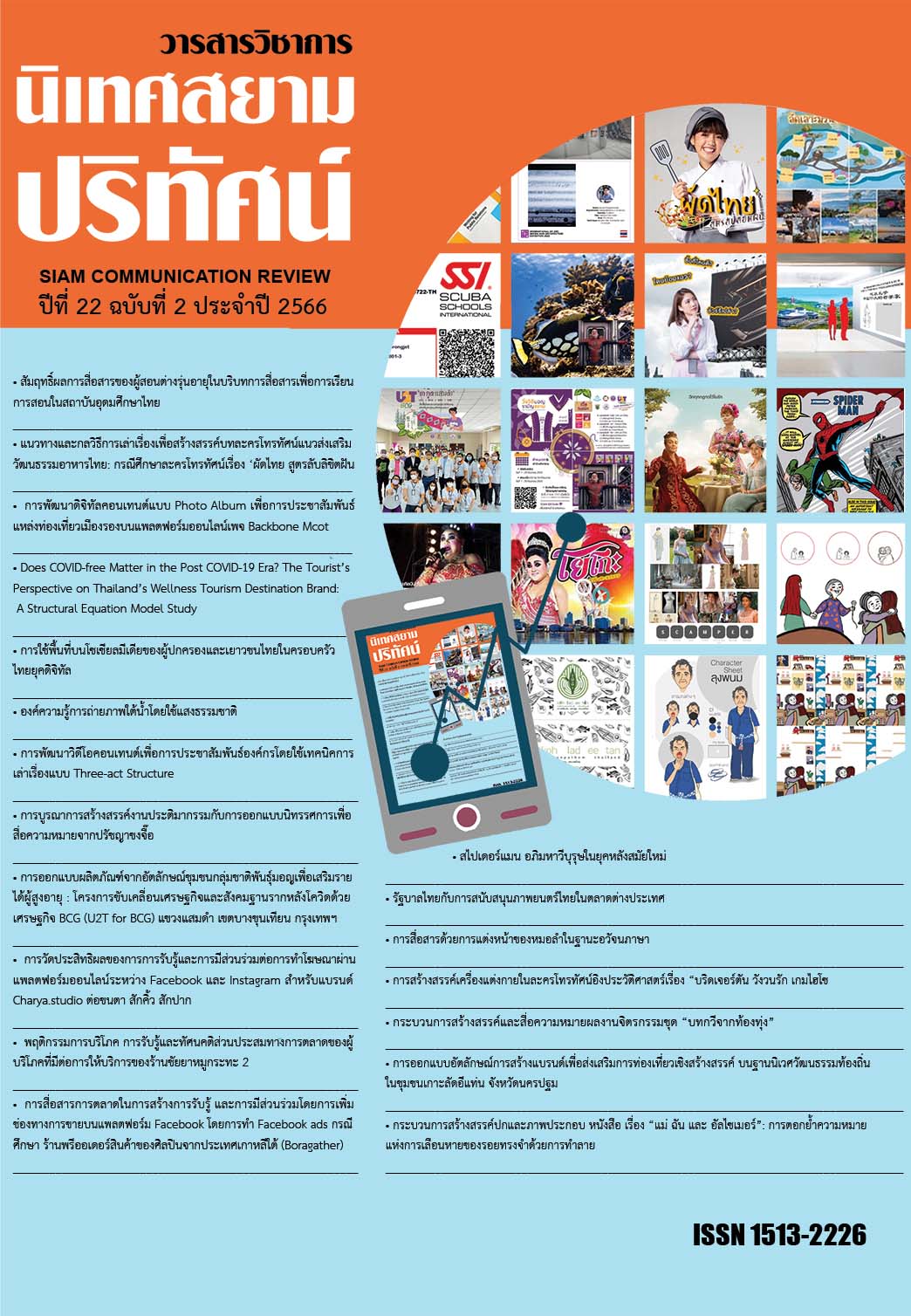Knowledge of Underwater Photography Using Natural Light
Main Article Content
Abstract
Underwater photography using natural light involves using natural light to create underwater images without the need for additional artificial light. Underwater photography with natural light requires specific techniques because underwater light is different from light on the surface. Underwater light consists of blue and green hues with lower intensity than surface light. Using camera light sensors that can adjust to high and low sensitivity, along with appropriate ISO adjustments, helps to achieve clear and beautiful images. Additionally, color filters are used to balance the colors in the images, making them look complete and balanced, especially when shooting in environments with increased underwater light and color. Thus, underwater photography with natural light requires skill and experience from the underwater photographer to produce beautiful and high-quality images.
The tools used in the research employ experimental methods or field trials, gathering primary data from underwater photography. Repeated underwater photography using natural light is conducted to gain knowledge. The research results show that 1. Underwater photos must have sharpness; 2. The color of underwater photos should be vivid or close to reality under normal light conditions, without alteration or deviation from the true colors; 3. Appropriate composition is necessary to make the images beautiful and communicative; 4. The direction of natural light used must be suitable for the intended communication purpose of the photo, and there should be no artificial light mixed within the underwater images.
Article Details

This work is licensed under a Creative Commons Attribution-NonCommercial-NoDerivatives 4.0 International License.
References
กนกรัตน์ ยศไกร. (2551). การถ่ายภาพเพื่อการสื่อสาร Photography for Communication. กรุงเทพฯ : ทริปเพิ้ล เอ็ดดูเคชั่น.
กฤษณ์ ทองเลิศ, (2554). การถ่ายภาพเชิงวารสารศาสตร์: แนวคิด เทคนิค การวิเคราะห์, กรุงเทพฯ: อินทนิล.
กิตติธัช ศรีฟ้า. (2565). การถ่ายภาพเชิงวิจิตรศิลป์ใต้น้ำ. ศิลปกรรมสาร, 15(1), 34-54.
กิตติธัช ศรีฟ้า. (2565). หลากสีสันโลกใต้ท้องทะเล. วารสารนิเทศสยามปริทัศน์, 21(1), 268-281
กิตติธัช ศรีฟ้า. (2565). ภาพถ่ายใต้น้ำสุนทรียภาพใต้ท้องทะเล. วารสารเทคโนโลยีสื่อสารมวลชน มทร.พระนคร, 7(2), 111-121
ณัฐพงศ์ ฐิติมานะกุล และรักษาศิกดิ์ สิทธิวิไล. (2550). กล้องดิจิตอล. กรงเทพฯ: เสริมวิทย์ อินฟอเมชั่น.
ตะวัน พันธ์แก้ว. (2555). คู่มือถ่ายภาพด้วยกล้อง DSLR ฉบับสมบูรณ์. กรุงเทพมหานคร. บริษัท โปรวิชั่น จำกัด.
ภักตร์พิมล เสนีย์. (2550). ออบติกส์ทางการถ่ายภาพ. ปทุมธานี: ศูนย์เทคโนโลยีการพิมพ์ ปทุมธานี.
ภัคนัย ทองทิอัมพร. (2550). การมองเห็นและการวัดสี. กรุงเทพฯ: กรมวิทยาศาสตร์บริการ โครงการฟิสิกส์และวิศวกรรม.
วันชัย แจ้งอัมพร. (2531). ถ่ายภาพใต้น้ากับกล้องนิโคนอส. กรุงเทพฯ: โอ.เอส.พริ้นติ้งเฮ้าส์.
สถาบันวิจัยจุฬาภรณ์. (2546). ฟิสิกส์ใต้น้า. คู่มือการฝึกอบรมหลักสูตรนักด้านอนุรักษ์ใต้ทะเล. กรุงเทพฯ: โครงการอุทยาน ใต้ทะเล จุฬาภรณ์.
สมาน เฉตระการ. (2548). การถ่ายภาพเบื้องต้น (พิมพ์ครั้งที่ 52). กรุงเทพฯ: เทคนิค พริ้นท์ติ้ง.
สุรพงษ์ บัวเจริญ. (2554). องค์ประกอบศิลป์สำหรับนักถ่ายภาพ. กรุงเทพมหานคร: สำนักพิมพ์เอ็มไอเอส.
Hunt, C. V., Harvey, J. J., Miller, A., Johnson, V. and Phongsuwan, N. (2013). The Green Fins approach for monitoring and promoting environmentally. sustainable scuba diving operations in South East Asia. Ocean & Coastal Management, 78, 35-44.
Miller, M. L. (1993). The rise of coastal and marine tourism. Ocean and Coastal Management, 20(1993), 181-199.
Miller, M.L., & Auyong, J. (1991). Coastal zone tourism: A potent force affecting environment and society. Marine Policy, 15(2), 75-99.
ระบบออนไลน์
อนุกูล บูรณประทีปรัตน์. สีของน้ำทะเล. เข้าถึงได้จาก http://www.uniserv.buu.ac.th/forum2/topic.asp?TOPIC_ID=5956
Hall, C. M., & Page, S. (2014). The Geography of Tourism and Recreation: Environment, Place and Space. London: Routledge. Retrieved from https://doi.org/10.4324/9780203796092


